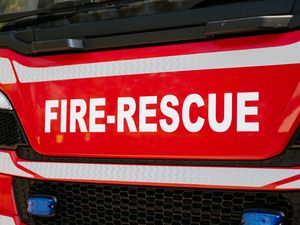Blog: Meteor lights up skies over the UK
It's been widely reported over the past day or so that a huge fireball travelled over the length of the country, from Scotland to the South of England writes Shropshire stargazer Carl Drinkwater.
It's been widely reported over the past day or so that a huge fireball travelled over the length of the country, from Scotland to the South of England writes Shropshire stargazer Carl Drinkwater.
If you were lucky enough to have seen it, you'll have witnessed something that only happens over the UK every year or two, and lasts less than half a minute. Definitely a case of being in the right place at the right time.
The huge fireball was a piece of space debris - a meteoroid - which entered the atmosphere at perhaps 72,000 miles per hour, superheating the atmosphere and causing it to glow and burn up. It is estimated that the meteoroid that caused Saturday night's fireball was only the size of a fist.
The fireball was just a grand shooting star - the only difference is the size of the meteoroid. A normal shooting star is caused by a meteoroid about the size of a pebble, or even smaller.
Shooting stars, or meteors, are common. If you were to look at the night sky for an hour, there is a good chance that you'll see one. Looking for shooting stars when the Moon isn't about and from dark skies will help you see these fainter shooting stars.
Most meteroids are vapourised as they enter the atmosphere, or fall to earth as microscopic dust. But some do make it to earth, which allows scientists to see what they are made of, and estimate their age. Meteorites are classified as stony or iron (or a mixture), and most are 4.5 billion years ago and are leftovers from the creation of the Solar System.
You'll see I've used the terms meteor, meteoroid and meteorite in the paragraphs above. So whats's the difference between a meteor, a meteoroid and a meteorite? The words describe the same thing - a bit of space debris - but the word that's used depends on where the object is :
Meteoroid is used when the object is flying about in space
Meteor is used when the object is falling through the atmosphere, and produces the streak of light we usually call a shooting star
If a meteoroid reaches the ground, then thats called a meteorite
There are times of the year when shooting stars are much more common than others, and these are called meteor showers. These are mostly caused by the earth flying through or near the orbit of comets, and can cause rates of has high as one bright shooting star every minute.
The best meteor showers occur in August, November and December, and we'll cover them in Shropshire's Sky At Night later in the year. There are less notable showers at other times of the year, including the Lyrids in April. See next month's Sky At Night for details on that.
Did you see the fireball on Saturday night? Please leave a comment if you did.




